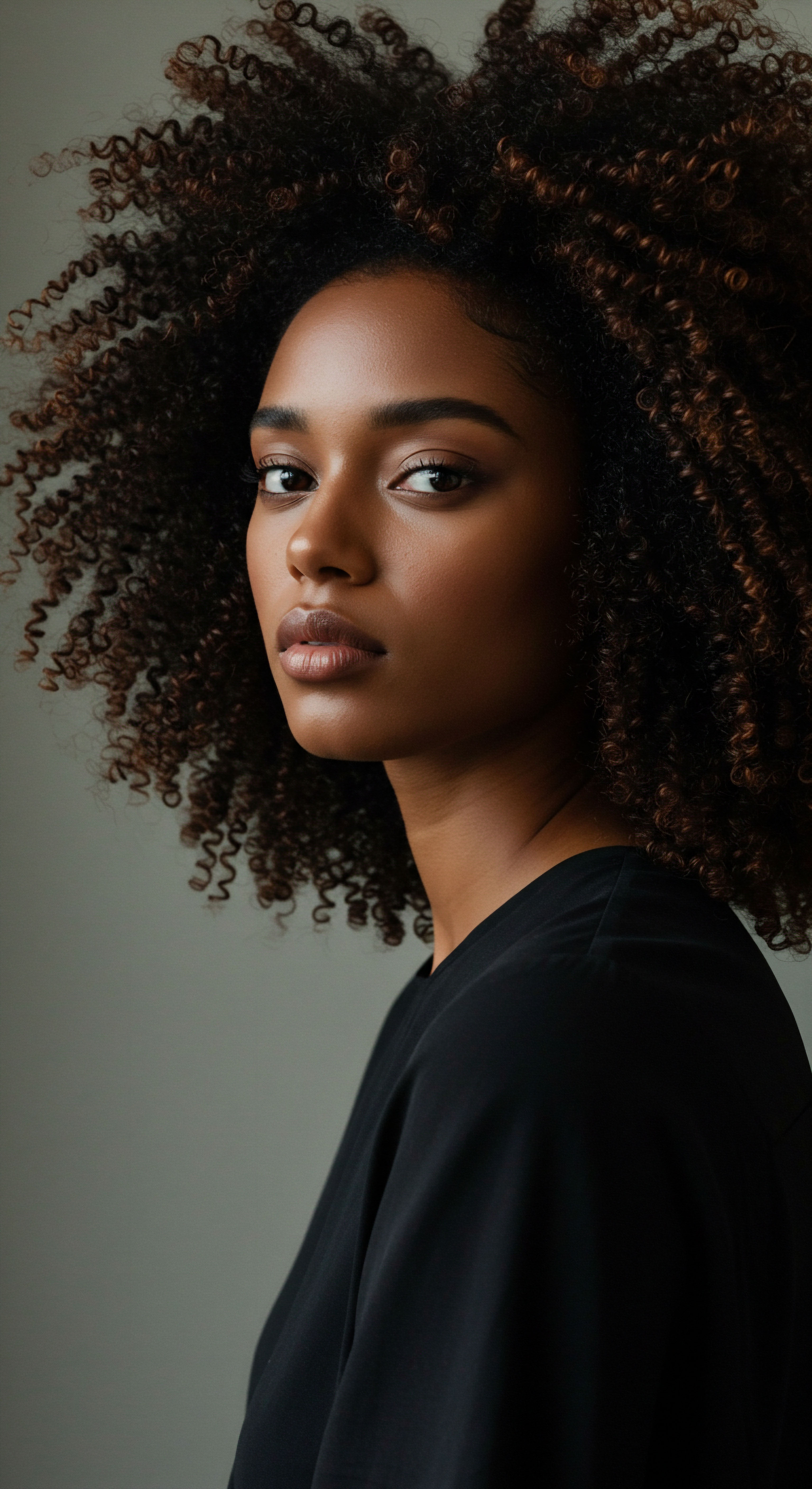
Roots
The air around us, a silent, ever-present force, holds a secret language with our hair. It speaks in whispers of moisture, a conversation that shapes our strands, sometimes coaxing them into a halo of frizz, other times allowing them to lie in smooth, defined coils. For those with textured hair, this dialogue with environmental humidity is particularly profound, a relationship steeped in the very architecture of each strand and the deep history of our care traditions. It is a dance between the atmosphere and our inherent beauty, a connection that influences not only how our hair appears in a single moment, but also its health and resilience over time.
Understanding this relationship begins at the foundational level, within the very structure of textured hair itself. Our hair is a complex protein fiber, primarily composed of keratin, which possesses a natural affinity for absorbing moisture from its surroundings. This hygroscopic property means hair is constantly seeking equilibrium with the water vapor in the air.
When humidity levels are high, water molecules in the atmosphere eagerly diffuse into the hair shaft, particularly if the hair is dry or porous. This absorption causes the hair fiber to swell, leading to a cascade of effects that manifest as changes in texture, volume, and manageability.
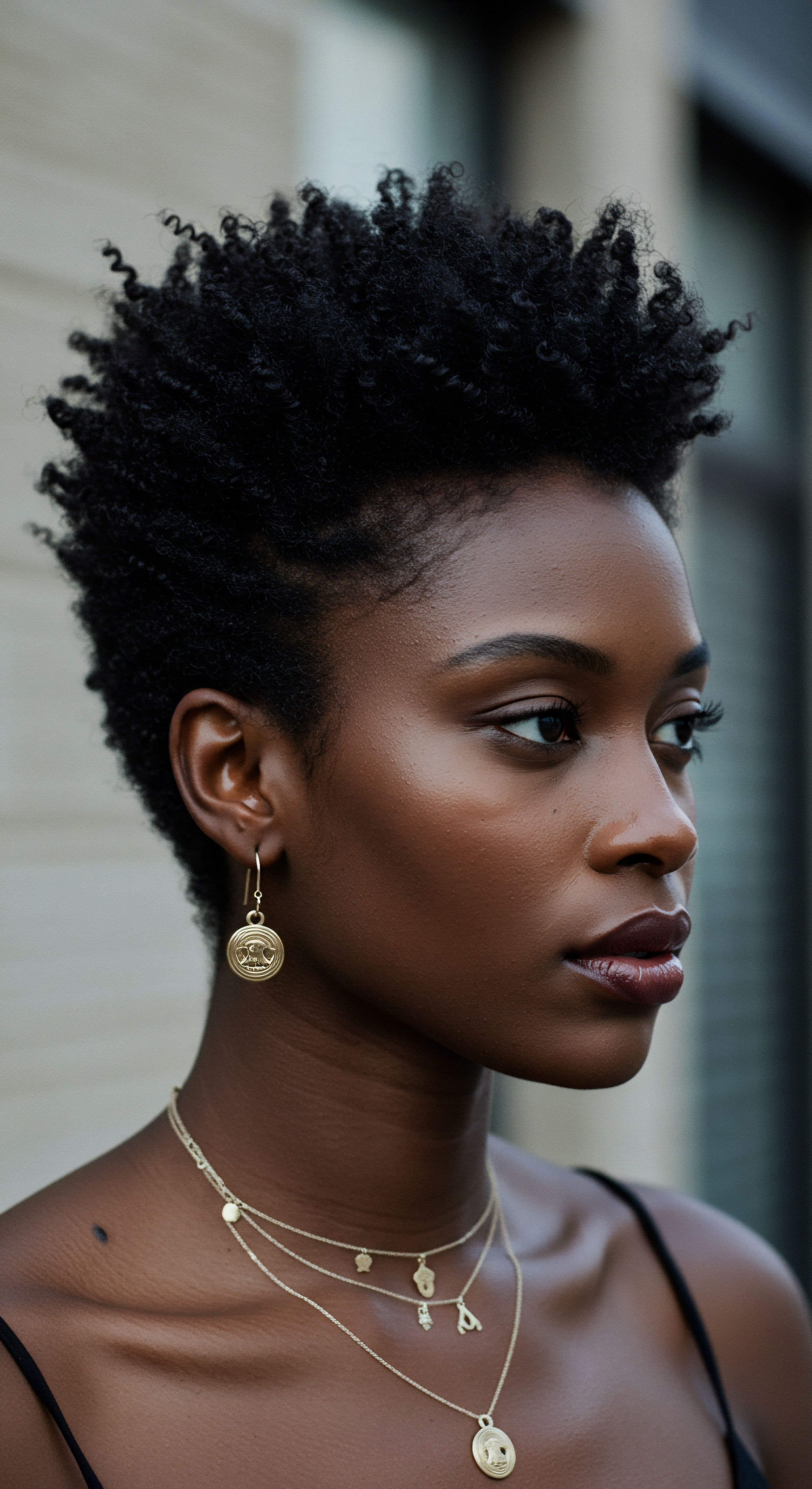
Hair Anatomy and Environmental Influence
The human hair strand, seemingly simple, is a marvel of biological engineering. At its core lies the Medulla, a central channel whose role is thought to include maintaining hair volume and strength, along with thermoregulation. Surrounding the medulla is the Cortex, the substantial portion of the hair fiber, composed of keratin proteins. These proteins are held together by various bonds, including strong disulfide bonds and weaker hydrogen bonds.
It is these hydrogen bonds, responsible for the hair fiber’s moisture properties, that are particularly sensitive to environmental humidity. They can stretch and reform simply by wetting the hair, or by the absorption of atmospheric moisture.
The outermost layer, the Cuticle, consists of overlapping scales, much like shingles on a roof. In healthy hair, these scales lie flat, creating a smooth surface that reflects light and helps seal moisture within the cortex. When humidity increases, the hair absorbs water, causing the fiber to swell.
This swelling can lift the cuticle scales, leading to a rougher surface texture and the familiar appearance of frizz. This phenomenon is especially pronounced in textured hair, which often has a naturally more open cuticle structure and a greater surface area due to its helical shape, making it more susceptible to environmental moisture fluctuations.
The interplay between environmental humidity and hair’s protein structure dictates its behavior, particularly for textured strands.

Textured Hair’s Unique Relationship with Moisture
Textured hair, with its diverse curl patterns, presents a distinct set of considerations regarding humidity. The very curvature of the hair strand impacts how moisture travels along its length. Natural oils, or sebum, produced by the scalp’s sebaceous glands, find it more challenging to traverse the bends and coils of curly and coily hair compared to straight hair.
This can lead to a natural tendency towards dryness in textured hair, even though some studies suggest African hair can exhibit a high overall lipid content. This inherent dryness makes textured hair more prone to absorbing external moisture when humidity is high, contributing to significant swelling and changes in curl definition.
A scientific study published in the Proceedings of the National Academy of Sciences revealed an intriguing evolutionary adaptation related to hair texture and climate. Researchers used a thermal manikin and human hair wigs of various textures (straight, moderately curled, and tightly curled) to study how different hair textures affect heat gain from solar radiation in environments mimicking equatorial Africa (86°F and 60% relative humidity). The study concluded that while all hair types reduced solar radiation to the scalp, Tightly Curled Hair Provided the Best Protection from the Sun’s Radiative Heat While Minimizing the Need to Sweat to Stay Cool. This suggests that the very curl and coil of textured hair, often perceived as a challenge in humid climates today, was an ancient, beneficial adaptation for thermoregulation, highlighting a deeper, biological connection between hair texture and environmental conditions.

The Essential Lexicon of Hair and Humidity
To truly understand hair’s response to humidity, a precise vocabulary becomes indispensable. Here are some key terms that illuminate this dynamic:
- Hygroscopy ❉ This describes hair’s ability to absorb and release water molecules from the surrounding air. Hair is a hygroscopic material, constantly exchanging moisture with its environment.
- Porosity ❉ This refers to the hair’s ability to absorb and retain moisture. High porosity hair, often a result of lifted cuticles or damage, absorbs water readily but can also lose it quickly, making it more susceptible to frizz in humid conditions.
- Frizz ❉ The visible result of hair strands absorbing moisture unevenly, causing the cuticle to lift and the hair to appear rough, undefined, and unruly.
- Hygral Fatigue ❉ A state of stress caused by repeated swelling and shrinking of the hair shaft as it absorbs and releases water. This can weaken the hair over time, making it more prone to breakage.
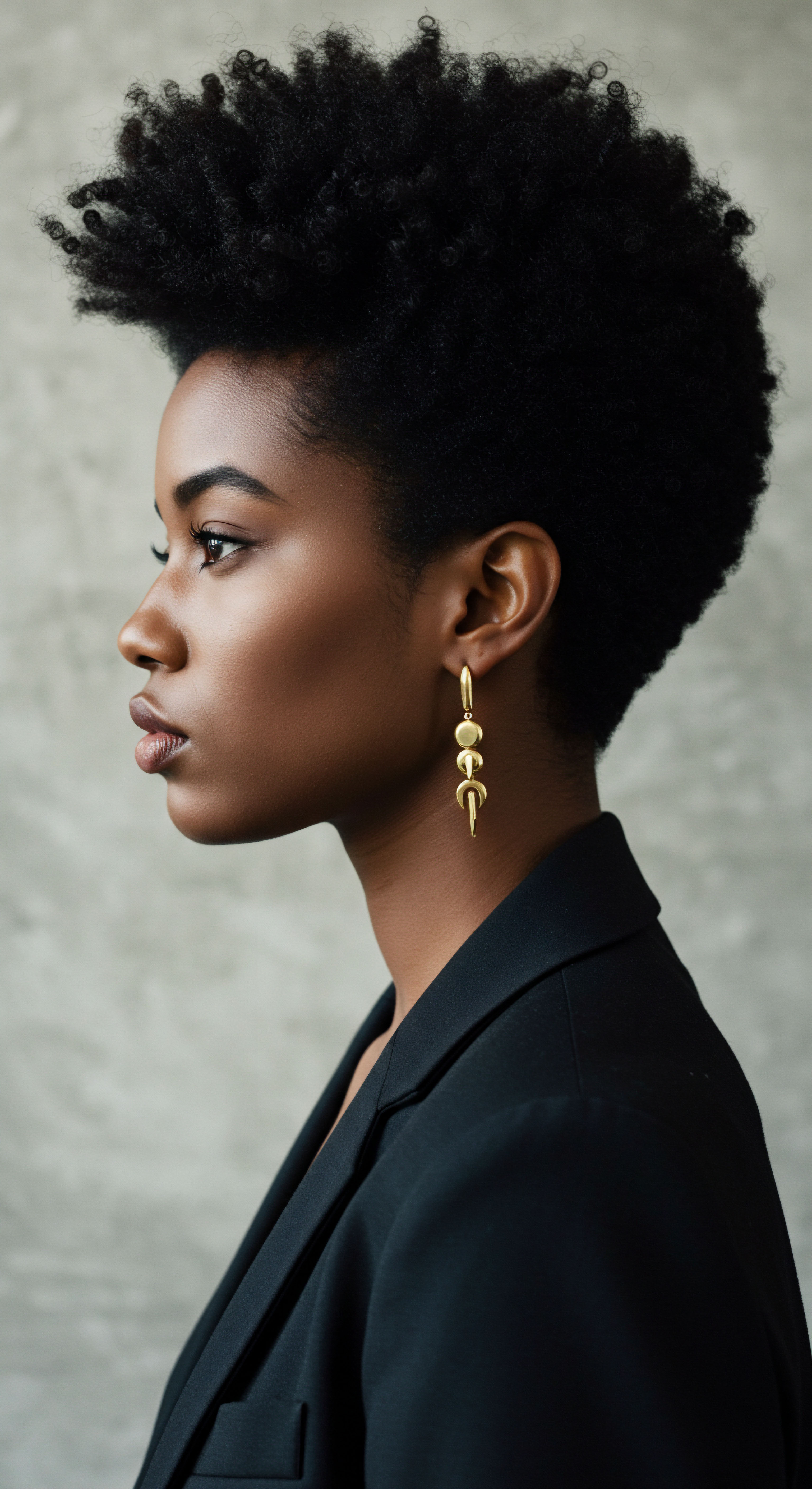
Hair Growth Cycles and Environmental Factors
While humidity primarily impacts the external characteristics of hair, its long-term effects can subtly influence overall hair health and, by extension, the hair growth cycle. The hair growth cycle consists of three main phases:
- Anagen ❉ The active growth phase, where hair fibers are produced.
- Catagen ❉ A transitional phase where growth stops.
- Telogen ❉ The resting phase, after which the hair sheds.
Persistent environmental stressors, such as extreme humidity fluctuations, can contribute to overall hair stress. While not a direct cause of hair loss, repeated hygral fatigue and the constant swelling and shrinking of hair can weaken the strands, potentially leading to increased breakage. This breakage, over time, can give the appearance of thinning or reduced density, even if the follicles themselves remain active. Moreover, humid conditions can sometimes lead to increased sweat and oil production on the scalp, potentially exacerbating pre-existing scalp conditions like dandruff, which can indirectly impact follicle health and hair growth.
| Humidity Level Low ( |
| Hair Fiber Response Loses moisture, hydrogen bonds tighten |
| Visual Effect Dry, static, prone to breakage, styles hold longer |
| Humidity Level Normal (30-50%) |
| Hair Fiber Response Balanced moisture exchange |
| Visual Effect Natural texture, standard manageability |
| Humidity Level High (50-70%) |
| Hair Fiber Response Absorbs moisture, swells, cuticle lifts |
| Visual Effect Frizz, reduced definition, increased volume, limpness |
| Humidity Level Extreme (>70%) |
| Hair Fiber Response Significant swelling, hydrogen bonds break |
| Visual Effect Unmanageable, significant frizz, loss of style, potential hygral fatigue |
| Humidity Level Understanding these responses is key to adapting hair care for optimal health and appearance. |

Ritual
Stepping from the quiet contemplation of hair’s intrinsic nature, we arrive at the vibrant realm of daily practice and thoughtful care. The interaction between our hair and environmental humidity, while rooted in science, finds its expression in the rituals we cultivate. These are not merely rote actions, but mindful engagements with our strands, informed by centuries of communal wisdom and contemporary understanding.
It is here, in the rhythm of our hands and the choices we make, that we truly begin to harmonize with the elements, rather than simply react to them. The pursuit of hair health in a world of varying moisture becomes a practice of gentle guidance, transforming potential challenges into opportunities for celebration.
The dance with humidity calls for an intentional approach to hair care, particularly for textured hair, which, as we know, has a unique thirst for moisture. Our daily routines and chosen styling methods become powerful tools in managing how our hair responds to the air’s moisture content.

Protective Styling as Shield and Celebration
Protective styles stand as a testament to ingenuity and a deep understanding of hair’s needs. These styles, which tuck away the ends of the hair, significantly reduce exposure to environmental stressors, including fluctuating humidity. They minimize manipulation, thereby reducing the likelihood of breakage and allowing hair to retain its length.
For generations, communities across the African diaspora have relied on styles such as Braids, Twists, and Bantu Knots not only for their aesthetic beauty and cultural significance but also for their inherent protective qualities. These styles act as a buffer, slowing the rate at which hair absorbs or loses moisture, thus mitigating the effects of sudden humidity shifts. In colder European climates, for instance, African immigrants often adjust their hair care routines to include added protection against harsh weather, with moisture retention becoming a central concern, relying on oils and leave-in conditioners. This adaptive practice highlights a deep, inherited wisdom about climate control for textured hair.
Protective styles offer a shield against environmental shifts, allowing hair to thrive in diverse climates.

Techniques for Natural Definition and Hydration
Achieving definition in textured hair, especially in humid conditions, requires a thoughtful blend of technique and product. The goal is to encourage the natural curl pattern to hold its shape without succumbing to excessive swelling or frizz.
- Wash and Go Method ❉ This approach, often paired with hydrating leave-in conditioners and curl-defining gels, aims to set the natural curl pattern while the hair is wet. The products create a cast that helps to seal the cuticle and lock in moisture, reducing the hair’s susceptibility to humidity as it dries.
- Shingling ❉ A meticulous technique where small sections of wet hair are coated with product and individually defined, allowing for maximum curl clump formation and definition. This method can be particularly effective in humid environments as it encourages uniformity in the curl pattern, which can be more resistant to frizz.
- Finger Coiling ❉ Similar to shingling, this involves wrapping small sections of hair around a finger to create distinct coils. This technique helps to reinforce the hydrogen bonds in the desired curl shape, making them less likely to disrupt when exposed to moisture.
The consistent application of moisturizing products is paramount. When hair is adequately moisturized, its internal structure is less inclined to absorb excess water from the air, thereby minimizing frizz. This principle underpins much of the advice for managing hair in humid climates ❉ saturate the hair with beneficial moisture so there is less capacity for external moisture to infiltrate and disrupt the strand.

Heat Styling and Thermal Reconditioning with Care
Heat styling, while offering temporary straightness or defined curls, introduces a different dynamic to the humidity equation. Tools like flat irons or curling wands temporarily break the hair’s hydrogen bonds, allowing the hair to be reshaped. However, these bonds are highly susceptible to moisture. When hair styled with heat encounters humidity, the hydrogen bonds readily reform with the water molecules in the air, causing the hair to revert to its natural texture, often accompanied by frizz.
For those who choose heat styling, a safety-first approach is essential, especially when considering long-term hair health in varied climates.
- Heat Protectants ❉ These products create a barrier that minimizes direct heat damage, which can otherwise increase hair porosity and make it more vulnerable to humidity.
- Thorough Drying ❉ Ensuring hair is completely dry before stepping into a humid environment is vital. Still-damp hair will absorb atmospheric moisture far more quickly, leading to immediate reversion and frizz.
- Humidity-Resistant Products ❉ Selecting styling products that are specifically formulated to repel moisture or create a humidity shield can prolong the life of a heat-styled look.
Repeated thermal styling, particularly without proper protection, can compromise the hair’s cuticle, making it more porous and less resilient to environmental shifts over time. This long-term weakening can mean that even moderate humidity begins to have a more pronounced, negative impact on hair health and appearance.
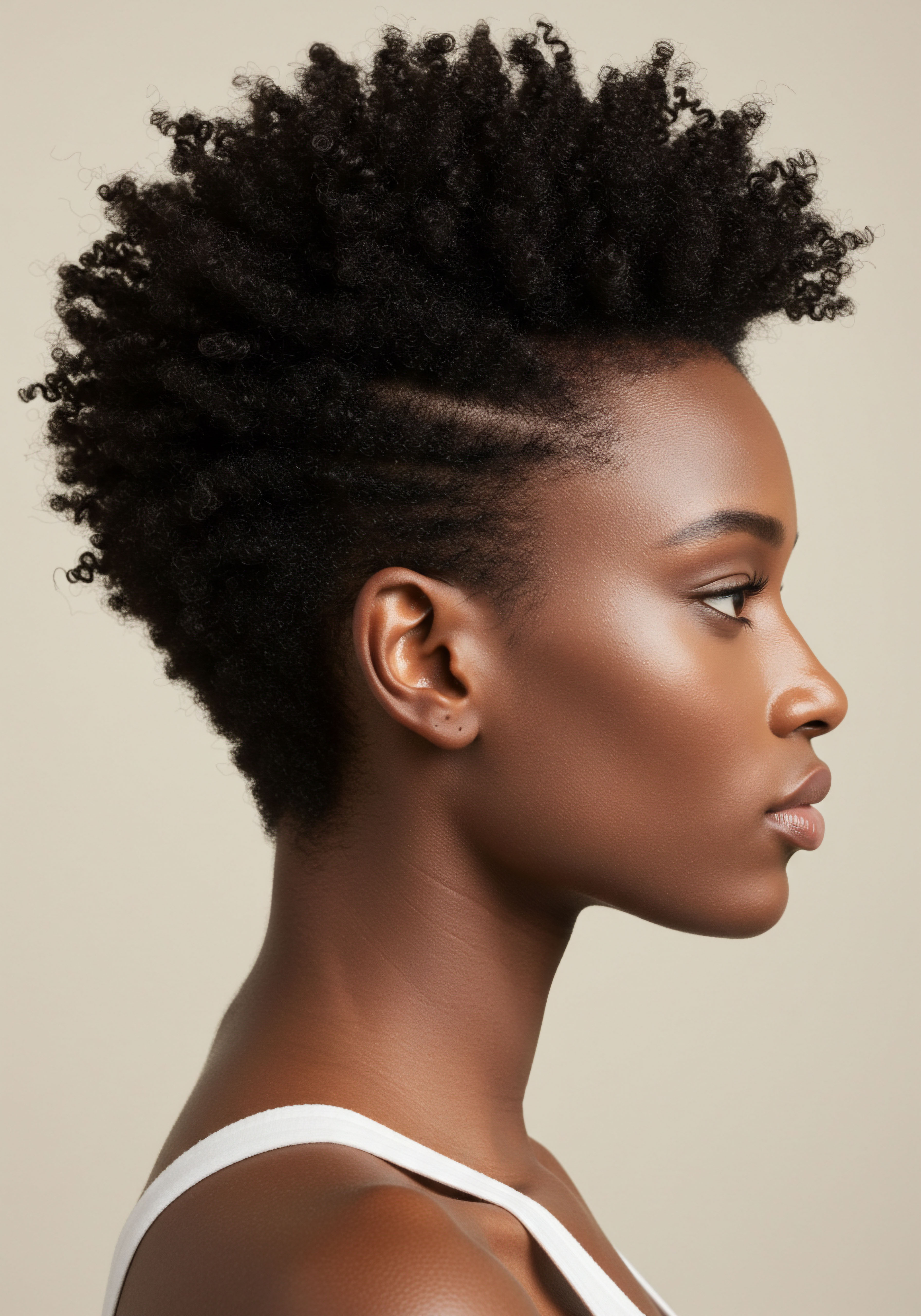
The Complete Textured Hair Toolkit
A well-curated collection of tools and products forms the backbone of any effective hair care ritual, particularly when confronting the challenges of humidity.
| Tool Category Wide-Tooth Comb |
| Purpose Gentle detangling of wet hair |
| Humidity Benefit Minimizes breakage, preserves curl pattern, reduces frizz potential |
| Tool Category Microfiber Towel or T-Shirt |
| Purpose Drying hair gently |
| Humidity Benefit Reduces friction and frizz compared to terry cloth, less cuticle disturbance |
| Tool Category Spray Bottle |
| Purpose Re-wetting hair for product application or refreshing |
| Humidity Benefit Allows for controlled moisture addition, aids in reactivating products without full wash |
| Tool Category Diffuser Attachment |
| Purpose Drying curly hair with a blow dryer |
| Humidity Benefit Distributes heat evenly, minimizes frizz, enhances curl definition by preserving natural pattern |
| Tool Category Silk/Satin Scarf or Pillowcase |
| Purpose Nighttime hair protection |
| Humidity Benefit Reduces friction, minimizes moisture loss, prevents tangling and frizz |
| Tool Category Selecting the right tools can significantly enhance humidity management and hair health. |
Beyond tools, the products we choose play a pivotal role. Ingredients that act as emollients and humectants are often discussed, but their use requires careful consideration in humid environments. While Humectants attract water, in excessively humid conditions, they can draw too much moisture into the hair, leading to unwanted swelling and frizz, especially for high porosity hair. Conversely, in dry climates, they can pull moisture from the hair itself.
A balanced approach, often prioritizing emollients and occlusive agents that seal the cuticle, becomes more beneficial in managing humidity’s effects. These include natural oils and butters that create a protective layer around the hair shaft, safeguarding it against environmental moisture fluctuations and reducing the hair’s tendency to absorb atmospheric water.
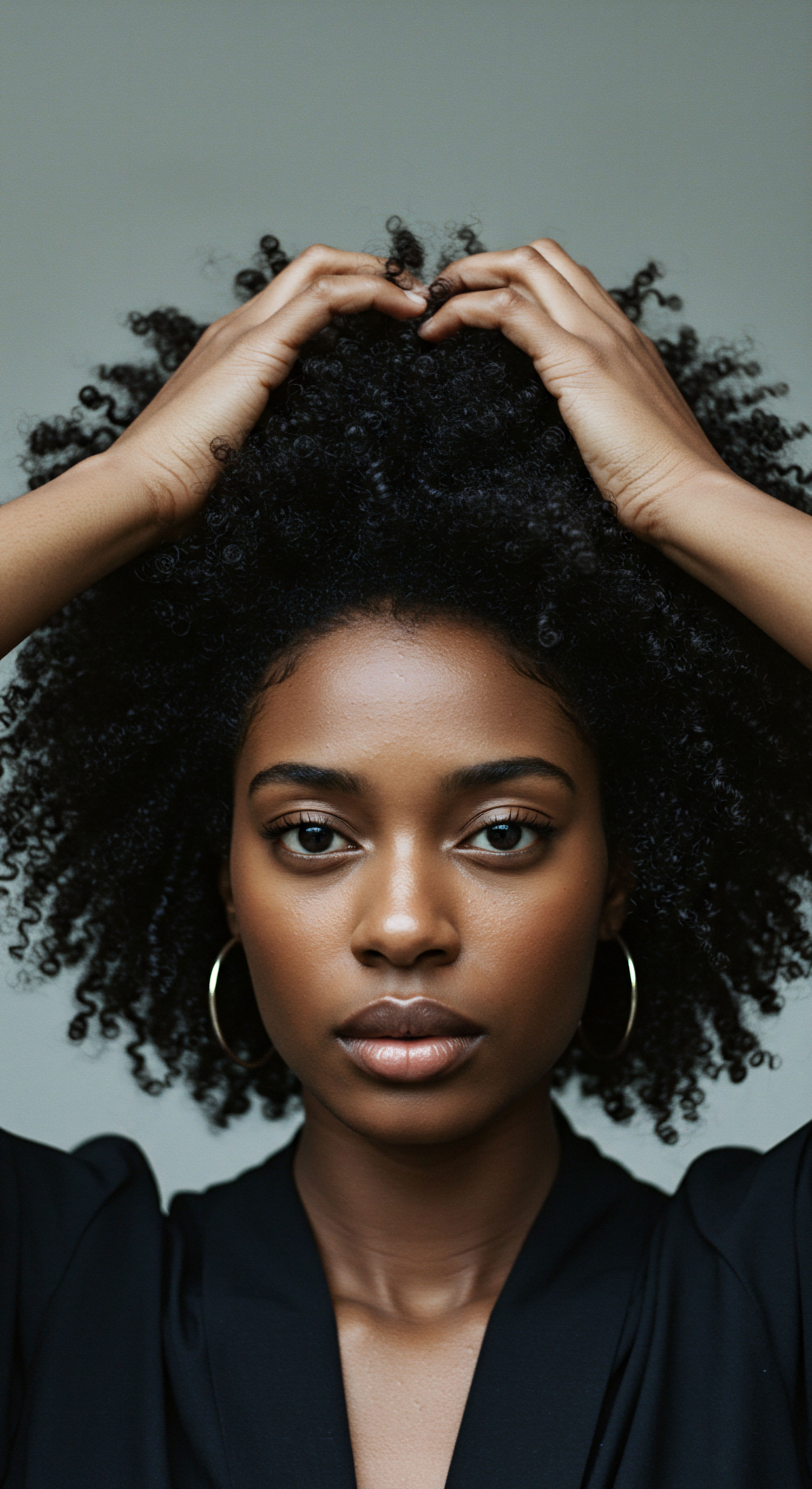
Relay
Having considered the elemental foundations of hair and the practical wisdom of daily ritual, we now approach a more expansive understanding, one that connects the personal experience of hair health to broader cultural currents and scientific insights. How, then, does the persistent presence of environmental humidity truly shape the destiny of our strands, not just in fleeting moments, but across the continuum of time and heritage? This question invites us to delve into the intricate interplay of biological predisposition, environmental pressures, and the enduring legacies of care that define textured hair’s journey. It is a dialogue that transcends simple cause and effect, recognizing hair as a living archive of experience and adaptation.
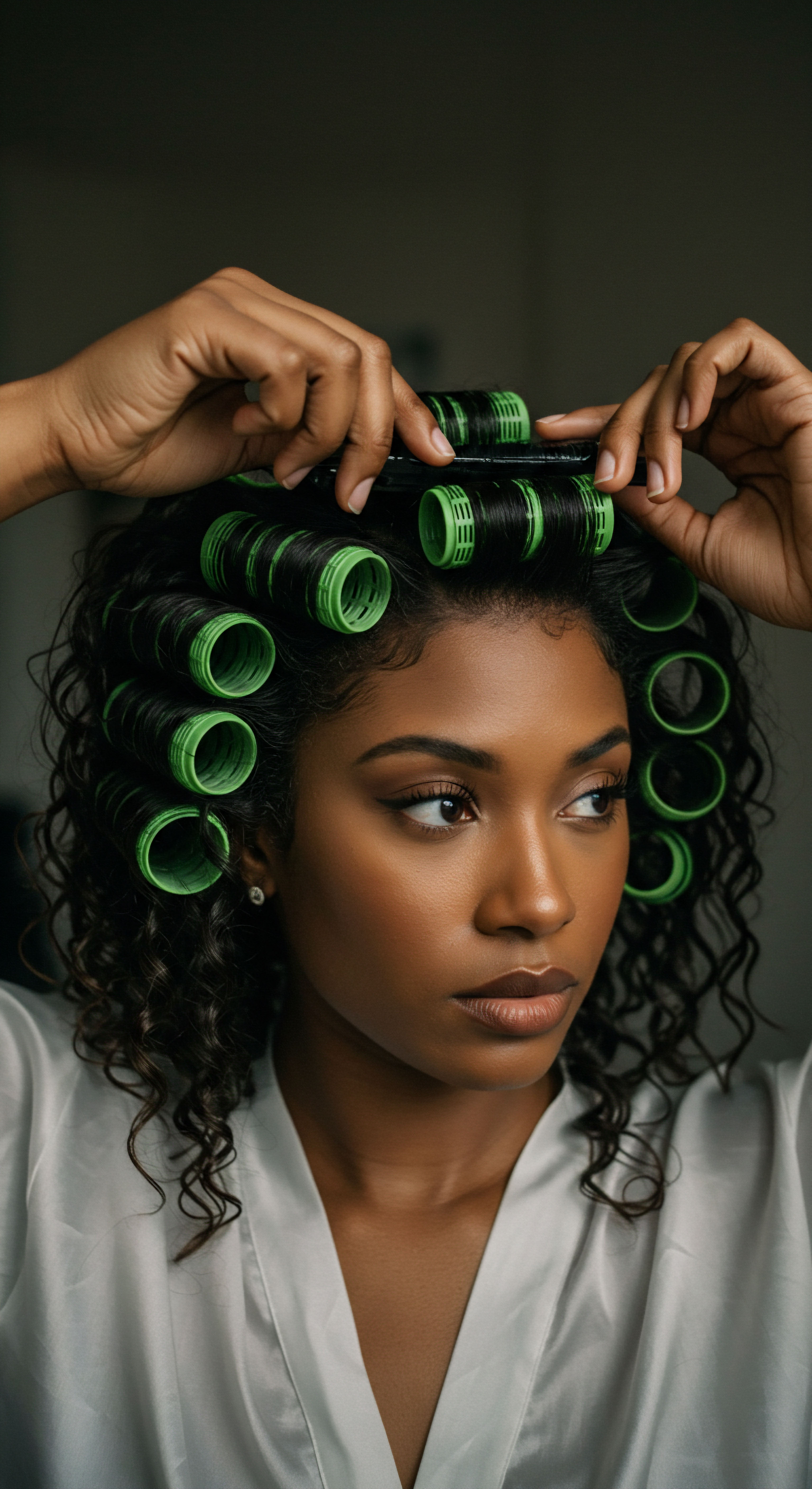
Personalized Regimens and Environmental Adaptation
The journey to healthy hair in a humid world is rarely a one-size-fits-all endeavor. A truly personalized regimen acknowledges the dynamic nature of both hair and environment. Textured hair, in particular, exhibits a wide spectrum of porosity levels, curl patterns, and lipid content, all of which dictate its unique response to atmospheric moisture.
For instance, hair with higher porosity, often a result of damage or its natural structure, will absorb more water from humid air, leading to increased swelling and frizz. Conversely, lower porosity hair might struggle to absorb moisture even when needed, potentially leading to dryness in less humid conditions.
A key aspect of a responsive regimen involves adjusting product choices based on the prevailing climate. In regions with consistently high humidity, the focus shifts from merely adding moisture to sealing it within the hair shaft and creating a barrier against external saturation. This means favoring products with occlusive properties, such as heavier oils or butters, which can help to smooth the cuticle and prevent excessive water absorption. Conversely, in drier environments, humectants can be beneficial in drawing moisture from the air to the hair, but their use must be balanced to avoid drawing moisture out of the hair when the air is exceptionally dry.
Consider the often-overlooked role of Scalp Sebum in humidity’s effects. Research indicates that under high humidity conditions, the transfer rate of scalp sebum to the hair increases. This transferred sebum can actually decrease hair setting strength, compounding the challenges posed by moisture alone. This suggests that managing scalp health and sebum production, alongside hair strand care, becomes an even more critical component of a humidity-resilient regimen.

The Nighttime Sanctuary and Bonnet Wisdom
The hours of sleep, often seen as a period of rest, hold profound significance for hair health, especially in the context of environmental humidity. Nighttime rituals provide a critical window to protect hair from friction, retain moisture, and mitigate the effects of the day’s atmospheric exposures. The seemingly simple act of covering hair at night with a silk or satin bonnet or sleeping on a silk pillowcase is a deeply impactful practice, rooted in both traditional wisdom and scientific understanding.
Traditional cotton pillowcases or head coverings can absorb moisture from the hair, leading to dryness and increased friction. This friction can disrupt the cuticle, contributing to frizz and breakage over time. Silk and satin, with their smooth surfaces, minimize this friction, allowing hair to glide without snagging.
More importantly, these materials do not absorb moisture from the hair in the same way cotton does, thereby helping to preserve the hair’s hydration levels throughout the night. This consistent moisture retention helps to stabilize the hair’s hydrogen bonds, making it less reactive to external humidity fluctuations upon waking.
This wisdom is not new. Across generations, particularly within communities with textured hair, head coverings at night have been a staple of care, a quiet act of preservation against environmental wear and tear. This practice, passed down through families, speaks to an intuitive understanding of hair’s vulnerability and the power of consistent, gentle protection.
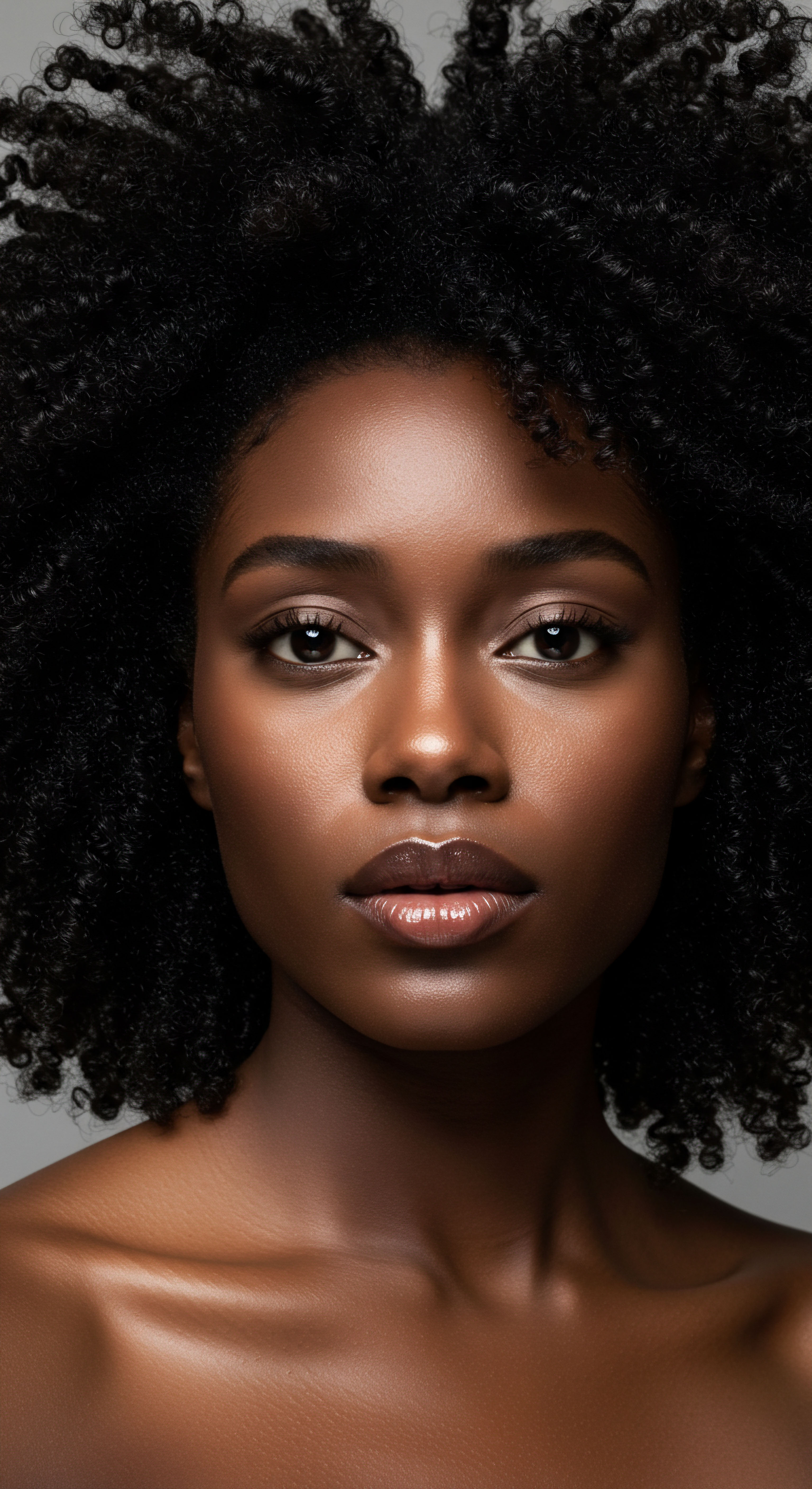
Ingredient Deep Dives for Textured Hair Needs
The efficacy of any hair care regimen ultimately rests upon the ingredients within the chosen products. For textured hair navigating humidity, certain ingredient categories rise to prominence:
- Humectants ❉ Substances like glycerin, hyaluronic acid, and aloe vera attract water molecules. While beneficial in moderate humidity, their concentration and the overall product formulation matter significantly in high humidity, where they can draw too much moisture into the hair, causing swelling and frizz.
- Emollients ❉ These ingredients, including various oils (like coconut, olive, shea butter) and fatty alcohols, smooth the hair’s surface by filling gaps in the cuticle. They create a protective layer that reduces friction and helps seal moisture within the hair shaft, acting as a barrier against external humidity.
- Proteins ❉ Keratin, hydrolyzed wheat protein, and silk protein can temporarily strengthen the hair and fill gaps in damaged cuticles. For hair experiencing hygral fatigue or increased porosity due to humidity, proteins can offer temporary reinforcement, though balance is key to avoid stiffness.
The strategic layering of these ingredients can create a more resilient hair structure. For instance, applying a leave-in conditioner rich in emollients, followed by a styling gel that forms a cast, can create a protective seal that resists humidity’s attempts to disrupt the curl pattern. This approach leverages the properties of different ingredients to create a multi-layered defense.

Solving Hair Challenges in Humid Conditions
The recurring challenge of frizz in humid conditions is a universal lament for many with textured hair. It arises when the hair’s internal moisture balance is disrupted by the higher concentration of water vapor in the air, causing the hair shaft to swell unevenly and the cuticle scales to lift.
Beyond frizz, humidity can also lead to:
- Loss of Definition ❉ Curls and coils may loosen or expand, losing their characteristic shape.
- Limpness or Excessive Volume ❉ Depending on hair type and porosity, humidity can either weigh hair down or cause it to puff out uncontrollably.
- Increased Tangles and Breakage ❉ Swollen hair with lifted cuticles can snag on adjacent strands, leading to more tangles and, consequently, more breakage during detangling.
Addressing these issues requires a proactive and reactive approach. Proactive measures include consistent hydration, using anti-frizz products that seal the cuticle, and choosing protective styles. Reactive strategies might involve refreshing products that contain light hold and humidity-blocking agents, or opting for updos when humidity is overwhelming.

Holistic Influences on Hair Health and Humidity
The story of hair health extends beyond topical applications and environmental factors. Our internal state, cultural practices, and historical context all play a role in how our hair responds to the world, including humidity.
Diet and Hydration ❉ A balanced diet rich in vitamins and minerals supports overall hair health from within, potentially enhancing its natural resilience. Adequate water intake also contributes to the body’s hydration, which can indirectly influence hair’s ability to maintain its moisture balance.
Stress and Hormones ❉ Chronic stress and hormonal fluctuations can impact hair growth cycles and overall hair health, making hair more vulnerable to external stressors. While not directly linked to humidity response, a compromised internal system can reduce hair’s ability to withstand environmental challenges.
Cultural and Ancestral Practices ❉ Many traditional hair care practices from African, Asian, and other cultures inherently address humidity management, often without explicitly naming it. For example, the ancient Ayurvedic practice of hair oiling, still relevant today, focuses on nourishing the scalp and hair with warm, herbal-infused oils. This practice creates a protective barrier that helps to smooth the cuticle and lock in moisture, reducing the hair’s susceptibility to environmental factors like humidity. Similarly, the historical reliance on natural butters and oils in African hair care was a pragmatic response to climate, aiming to retain moisture in diverse environments.
The evolution of hair care in the African diaspora also provides a compelling lens through which to view humidity’s impact. The historical cutting of hair during enslavement, an act meant to erase cultural identity, ironically underscored the deep connection between hair and self. Despite this, traditional practices persisted, adapting to new climates and available resources.
The popularization of the hot comb in the late 19th and early 20th centuries offered a temporary solution for straightening hair, but its effects were easily undone by humidity, highlighting the persistent challenge of moisture management. This continuous adaptation and resilience in hair care practices, from ancient oiling rituals to modern protective styles, reflect a profound, ongoing dialogue with the environment and a deep-seated desire to honor and protect textured hair.
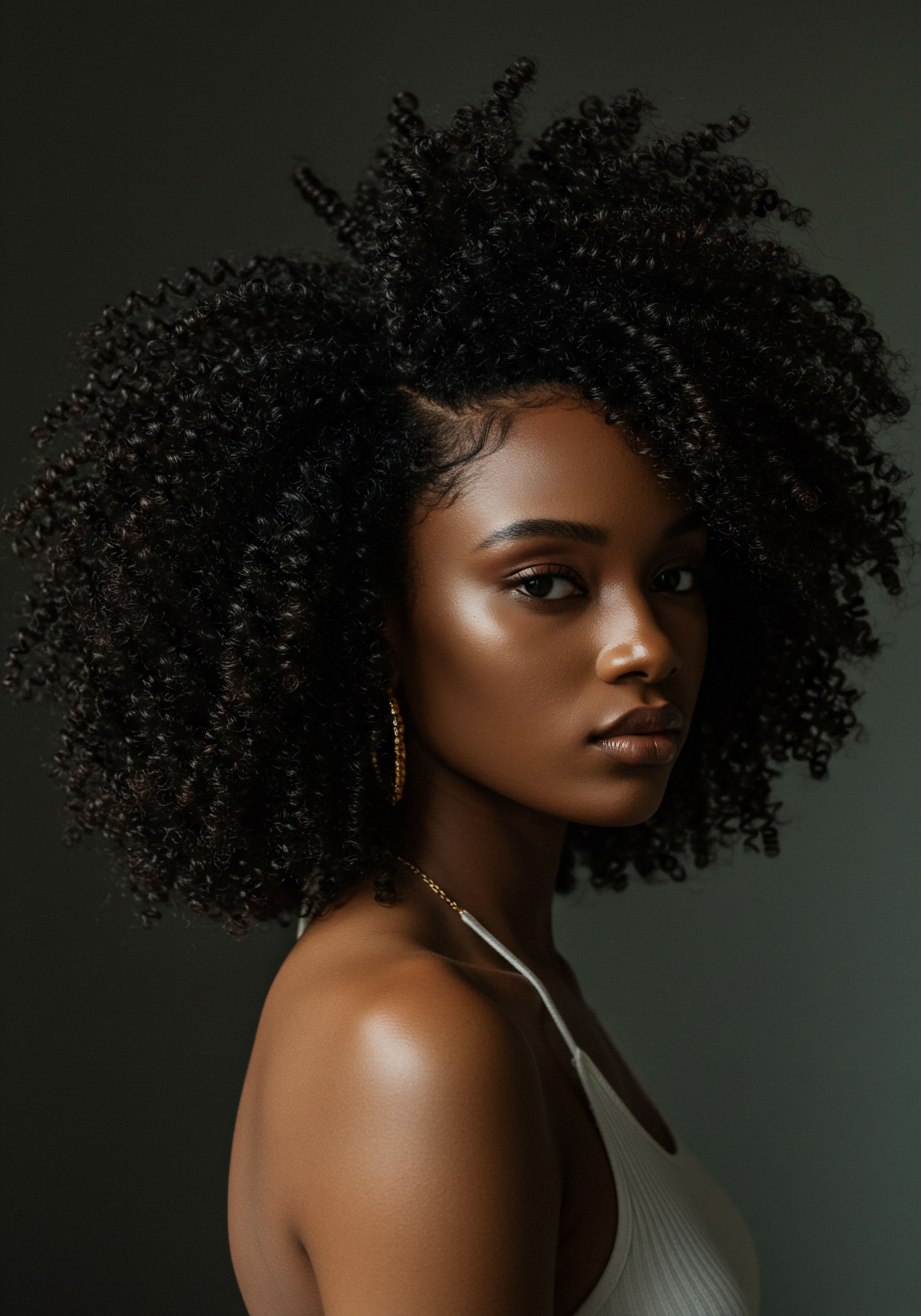
Reflection
The journey through the intricate world of hair and humidity reveals a profound truth ❉ our strands are not passive observers of the environment, but active participants in an ongoing dialogue with the air around us. From the molecular dance of hydrogen bonds within the keratin structure to the ancestral wisdom embedded in protective styles, every aspect of textured hair’s existence is shaped by its relationship with moisture. This understanding invites us to move beyond simply battling frizz or chasing definition, towards a more gentle, informed partnership with our hair.
It is a recognition that hair health is not a fixed state, but a dynamic equilibrium, constantly adjusting to the whispers of the atmosphere. To honor our hair, then, is to listen to these whispers, to understand the science that underpins its responses, and to apply the timeless rituals that allow its natural beauty to flourish, regardless of the day’s humidity.
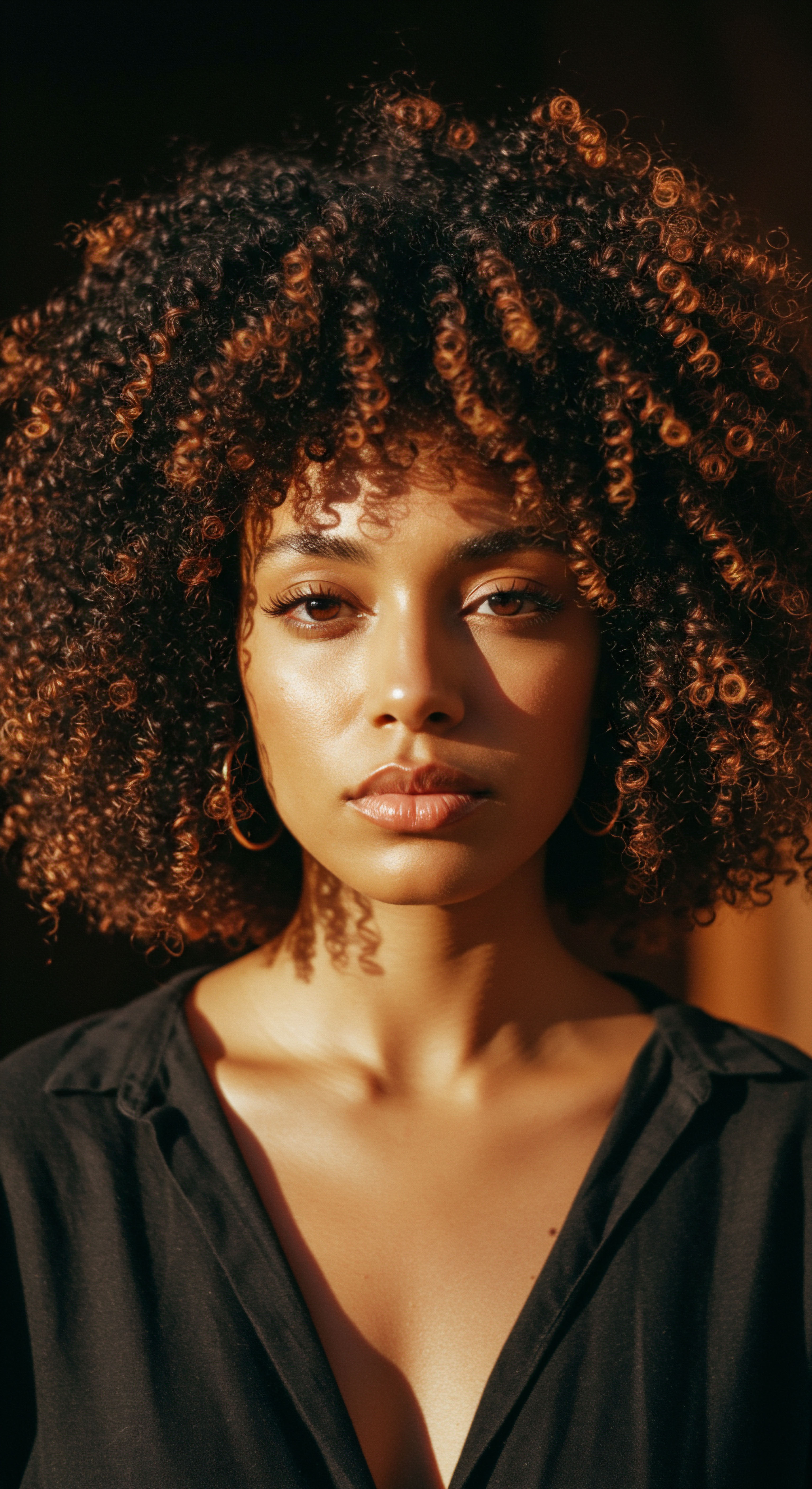
References
- 1. Davis-Sivasothy, Audrey. The Science of Black Hair ❉ A Comprehensive Guide to Textured Hair Care. Sivasothy Hair, 2011.
- 2. Robbins, Clarence R. Chemical and Physical Behavior of Human Hair. 5th ed. Springer, 2012.
- 3. Bolduc, Catherine, and Elaine K. Tamura. Hair Science ❉ The Hair Follicle. Springer, 2019.
- 4. Draelos, Zoe Diana. Hair Cosmetics ❉ An Overview. Taylor & Francis, 2005.
- 5. Yu, Y. Havenith, G. & Jablonski, N. G. (2023). The role of human hair texture in scalp cooling and heat loss. Proceedings of the National Academy of Sciences, 120(24), e2301053120.
- 6. Byrd, Ayana, and Lori L. Tharps. Hair Story ❉ Untangling the Roots of Black Hair in America. St. Martin’s Press, 2001.
- 7. Lad, Vasant. Ayurveda ❉ The Science of Self-Healing. Lotus Press, 1984.
- 8. Franbourg, A. Hallegot, P. Baltenneck, F. Freyssinet, J. M. & Bouillon, C. (2003). Current research on ethnic hair. Journal of the American Academy of Dermatology, 48(6), S115-S119.
- 9. Feughelman, Max. Mechanical Properties of Hair. Springer, 2000.
- 10. Davis-Sivasothy, Audrey. The Science of Black Hair ❉ A Comprehensive Guide to Textured Hair Care. Sivasothy Hair, 2011.
- 11. TRI Princeton. (2024). Hair Moisturization Claims 101.
- 12. Urbanhair. (2022). Monthly Guide By Urbanhair Part 2 ❉ The Interesting Science of Humidity Causing Frizzy Hair.
- 13. Smooth & Charming. (2024). How Humidity Affects Your Hair and What to Do.
- 14. Anthi. (n.d.). Humidity and Its Impact on Thinning Hair.
- 15. Kera Mane. (2024). Applying Keratin Treatments in High Humidity ❉ Tips for Effective Application and Frizz Control.
- 16. Sutra Beauty. (2022). Understanding “Humidity Hair” and How to Prevent It!
- 17. Balance Hair Care. (2023). How can humidity affect your hair and how to manage it?
- 18. Olaplex. (2024). What Causes Different Hair Types and Textures?
- 19. Better Not Younger. (2022). How Humidity Affects Different Hair Types.
- 20. NaturallyCurly. (2007). Humidity, Humectants and Hair.
- 21. Vertex AI Search. (2025). Can Weather Affect Hair Color and Style? Humidity, Static, and Styling Impacts.
- 22. My Derma Store. (2024). The Impact of Climate Change on Hair Health and How to Protect It.
- 23. Afriklens. (2024). African Hairstyles ❉ Cultural Significance and Legacy.
- 24. Ayurda. (2024). Nourish Your Hair ❉ Ancient Practice of Hair Oiling.
- 25. Joanna Colomas. (2023). Unlock Ancient Hair Care Secrets ❉ Discover Global Rituals for Lustrous Locks.
- 26. Rthvi. (2024). Exploring Ancient Hair Care Rituals ❉ Timeless Practices for Modern Hair Wellness.
- 27. NAJEAU. (n.d.). Humidity’s Impact on Hair & Scalp.
- 28. ResearchGate. (n.d.). The Influence of Scalp Sebum on the Performance of Hair-Styling Products and Its Transfer Behavior under High Humidity Conditions.
- 29. K18 Hair. (2024). What Is Optimal Hair Hydration?
- 30. MDPI. (n.d.). Porosity and Resistance of Textured Hair ❉ Assessing Chemical and Physical Damage Under Consumer-Relevant Conditions.
- 31. Clinikally. (2024). Understanding Hair Elasticity ❉ 6 Key Strategies for Enhancement.
- 32. Croda Beauty. (2025). Advancing the future of textured hair solutions.
- 33. Urbanhair. (2022). Monthly Guide By Urbanhair Part 2 ❉ The Interesting Science of Humidity Causing Frizzy Hair.
- 34. Times Life. (2025). 10 Ancient Indian Beauty Secrets That Modern Science Can’t Explain.
- 35. MDPI. (n.d.). The Genomic Variation in Textured Hair ❉ Implications in Developing a Holistic Hair Care Routine.
- 36. Hexis Lab. (n.d.). Genomic Variation in Textured Hair ❉ Implications for Holistic Hair Care.
- 37. BUALA. (2024). Hair as Freedom.
- 38. Klinika Dr Turkowski. (n.d.). Emollients, humectants, proteins – what ingredients are most important for hair?
- 39. Smooth & Charming. (2024). Managing Wavy Hair in Humid Climates ❉ Essential Tips.